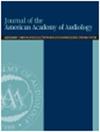The Influence of Motoric Maneuvers on Cervical Vestibular Evoked Myogenic Potentials (cVEMPs).
IF 1
4区 医学
Q3 AUDIOLOGY & SPEECH-LANGUAGE PATHOLOGY
Journal of the American Academy of Audiology
Pub Date : 2022-03-01
Epub Date: 2022-10-10
DOI:10.1055/s-0041-1739535
引用次数: 0
Abstract
BACKGROUND The cervical vestibular evoked myogenic potential (cVEMP) is a vestibular response that is produced by the saccule in response to intense, often low-frequency, short-duration auditory stimuli, and is typically recorded from a contracted sternocleidomastoid (SCM) muscle. Previous research has shown that the amplitude of the cVEMP is related to the amount of SCM electromyographic (EMG) activity. PURPOSE The aim of this study was to determine the influence of various remote motoric maneuvers on the amplitude of the cVEMP, as well as whether they influence the level of SCM EMG activity. RESEARCH DESIGN The cVEMP was recorded from the left SCM muscle to left ear stimulation, in response to the SCM condition, as well as three different motoric maneuvers (jaw clench, eye closure, and the Jendrassik maneuver). EMG activity was also varied between 50, 75, and 100% of maximal EMG activity. STUDY SAMPLE Data from 14 healthy subjects, with a mean age of 25.57 years (standard deviation = 5.93 years), was included in the present study. DATA COLLECTION AND ANALYSIS Mean latency and amplitude of the cVEMP were compared across the four conditions and varying magnitudes of EMG contraction. SPSS 26 was used to statistically analyze the results. RESULTS cVEMP latency did not vary across condition. cVEMP amplitude decreased with decreasing EMG magnitude. SCM contraction with jaw clench produced the largest increase in cVEMP amplitude; however, this condition was not significantly different from the SCM condition alone. SCM contraction with the Jendrassik maneuver produced a cVEMP amplitude that was similar and not statistically different from SCM contraction alone, and the addition of the eye closure maneuver to SCM contraction resulted in the lowest cVEMP amplitude, which was found to be statistically different from the standard SCM condition at 100 and 75% EMG activity. The amplitude relationship across the conditions was not found to vary with changes in EMG activity; however, a significant increase in EMG amplitude was found during the 50% muscle contraction condition when subjects performed the Jendrassik maneuver in addition to the standard SCM contraction. CONCLUSIONS The addition of the eye closure maneuver to SCM contraction resulted in a significant decrease in cVEMP amplitude, while the addition of the Jendrassik maneuver resulted in a significant increase in EMG activity at the lowest level of SCM activation (i.e., 50%). Additional research is necessary to determine how motoric maneuvers influence the cVEMP amplitude, and whether the results are also dependent on how SCM contraction is being produced (e.g., while supine vs. sitting).运动运动对颈前庭诱发肌源性电位的影响。
背景:颈前庭诱发肌源性电位(cemp)是一种前庭反应,由小囊对强烈的、通常是低频的、短时间的听觉刺激产生,通常记录于收缩的胸锁乳突肌(SCM)。先前的研究表明,cemp的振幅与SCM肌电图(EMG)活动的量有关。目的:本研究的目的是确定各种遥控运动对cemp振幅的影响,以及它们是否影响SCM肌电活动水平。研究设计:记录从左SCM肌肉到左耳刺激的cemp,以响应SCM条件,以及三种不同的运动动作(握紧下巴、闭眼和Jendrassik动作)。肌电活动也在最大肌电活动的50%、75%和100%之间变化。研究样本:健康受试者14例,平均年龄25.57岁(标准差5.93岁)。数据收集和分析:比较四种情况下cemp的平均潜伏期和幅度以及不同的肌电收缩幅度。采用SPSS 26软件对结果进行统计分析。结果:cemp潜伏期无明显差异。cemp振幅随肌电幅值的减小而减小。SCM收缩伴颌紧咬合使cemp振幅增加最大;然而,这种情况与单独的SCM情况没有显著差异。Jendrassik操作下的SCM收缩产生的cemp振幅与单独的SCM收缩相似且无统计学差异,而在SCM收缩中加入闭眼操作导致的cemp振幅最低,与标准SCM条件下的100和75%肌电活动有统计学差异。不同情况下的振幅关系不随肌电活动的变化而变化;然而,在肌肉收缩50%的情况下,当受试者在标准SCM收缩的基础上进行Jendrassik操作时,发现肌电图振幅显著增加。结论:闭眼操作增加SCM收缩导致cemp振幅显著降低,而Jendrassik操作增加了SCM激活最低水平(即50%)的肌电活动。需要进一步的研究来确定运动如何影响cemp振幅,以及结果是否也依赖于SCM收缩的产生方式(例如,仰卧与坐着时)。
本文章由计算机程序翻译,如有差异,请以英文原文为准。
求助全文
约1分钟内获得全文
求助全文
来源期刊
CiteScore
3.10
自引率
0.00%
发文量
46
审稿时长
6-12 weeks
期刊介绍:
The Journal of the American Academy of Audiology (JAAA) is the Academy''s scholarly peer-reviewed publication, issued 10 times per year and available to Academy members as a benefit of membership. The JAAA publishes articles and clinical reports in all areas of audiology, including audiological assessment, amplification, aural habilitation and rehabilitation, auditory electrophysiology, vestibular assessment, and hearing science.

 求助内容:
求助内容: 应助结果提醒方式:
应助结果提醒方式:


